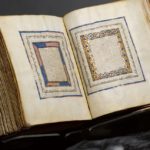
London.- The National Maritime Museum (NMM) in Greenwich, south-east London is showing “Art for the Nation” on long-term display at the Queen’s House. ‘Art for the Nation’ offers a major reassessment of the National Maritime Museum’s oil paintings collections. It brings together some of the finest of over 4000 paintings in the Museum’s care, under the roof of the Queen’s House – the Museum’s showcase for superior fine art.
The sea and all it entails with respect to world commerce, exploration and empire, is fundamental to British history and identity. It continues to be so, in shaping the profile of British multiculturalism and our shared imperial heritage. The 200 paintings in the exhibition both represent and are part of that heritage. As such, they provide a unique light on our history as a maritime nation and on the place of art within it. Grouped by the individual collections to which they relate, the paintings cover portraiture, history painting and landscape, as well as marine painting. They treat themes of encounter, colonialism and global exploration, shipwreck, battle and spectacle, as well as personality and the cult of the hero. They also point to their own history: their place within the history of British art, and the history of how they arrived at Greenwich.
The National Maritime Museum (NMM) was formally established by Act of Parliament in 1934 and opened to the public by King George VI on 27 April 1937. It includes the 17th-century Queen’s House and, from the 1950s, the Royal Observatory, Greenwich. There is also the sailing barge Shamrock, jointly owned by the National Maritime Museum and the National Trust on the Tamar, Cornwall, at the National Trust property Cotehele on the Tamar, Cornwall, and the ‘Valhalla’ ships’ figurehead collection on Tresco, Isles of Scilly. The Museum buildings began life in 1807 as a school for the children of seafarers. Greenwich began to develop as a cultural visitor destination with Sir James Thornhill’s completion of the Painted Hall (1707–26) in what is now the Old Royal Naval College (founded in 1694 as the Royal Hospital for Seamen). From 1823 a ‘National Gallery of Naval Art’, eventually including 300 portraits, paintings and artefacts, was created in the Hall, the first of its kind.

A separate Naval Museum was also established in the Hospital buildings when it became the Royal Naval College – the ‘Navy’s university’, 1873–1998. After its foundation in 1910, the Society for Nautical Research (SNR) independently developed the aim of founding a ‘national naval and nautical museum’. In 1927–28, following a public appeal organised by the Society, one of its wealthy members Sir James Caird (1864–1954) purchased the A.G.H. Macpherson Collection of maritime prints – over 11,000 items – with this in view. He also purchased the ship models from the training ship Mercury, with many other items being bought by him or otherwise donated.
In 1933 the Royal Hospital School at Greenwich moved to Suffolk, vacating the Queen’s House and related buildings which it had occupied since 1806, originally as the separate Royal Naval Asylum but combining with the 18th-century Greenwich Hospital School from 1821. The House was restored by the Ministry of Works and the flanking wings – added for the School between 1807–76, began a long period of museum conversion, largely at Sir James Caird’s expense: this was only completed in 1951. Read more about the Royal Hospital School. All the Museum buildings have subsequently been upgraded at various times and a full modern redevelopment of the main galleries, centring on what is now Neptune Court, was completed 1999. The National Maritime Museum has now embarked on a major new development, the Sammy Ofer Wing. Scheduled to open in 2012 in time for the London Olympics, the custom-designed exhibition spaces and highly accessible archives will drive a sea change in the way the Museum presents its programme to an ever-growing volume of visitors, both from within the UK and internationally.

The Museum is funded by Government with additional income derived from trading activity and sponsorship. Entry to all Museum sites at Greenwich is free but charges are made for some special exhibitions. The Museum’s objectives and targets are outlined in its current Funding Agreement. The collections comprise about 2.48 million items, many on loan to museums elsewhere in Britain. The public galleries at Greenwich display a thematically arranged selection and the remainder are accessible for public interest and research in various ways. The majority of the NMM’s small-boat collection is on display at the new National Maritime Museum, Cornwall, at Falmouth. The Museum has the most important holdings in the world on the history of Britain at sea, including maritime art (both British and 17th-century Dutch), cartography, manuscripts including official public records, ship models and plans, scientific and navigational instruments, time-keeping and astronomy (based at the Observatory), and in many other categories.
Its British portraits collection is only exceeded in size by the National Portrait Gallery and its holdings related to Nelson and Cook, among many other individuals, are unrivalled. It has the world’s largest maritime historical reference library (100,000 volumes) including books dating back to the 15th century. Find out more about the Museum’s collections or view over 9000 objects on Collections Online. The Museum is also unique in the architectural importance of its main buildings, the Queen’s House in particular being the keystone of the historic park-and-palace landscape of ‘Maritime Greenwich’, which was inscribed as a UNESCO World Heritage Site in 1997. Flamsteed House (1675–76), the original part of the Observatory, was designed by Sir Christopher Wren and was the first purpose-built scientific research facility in Britain. Visit the museum’s website at … http://www.nmm.ac.uk







